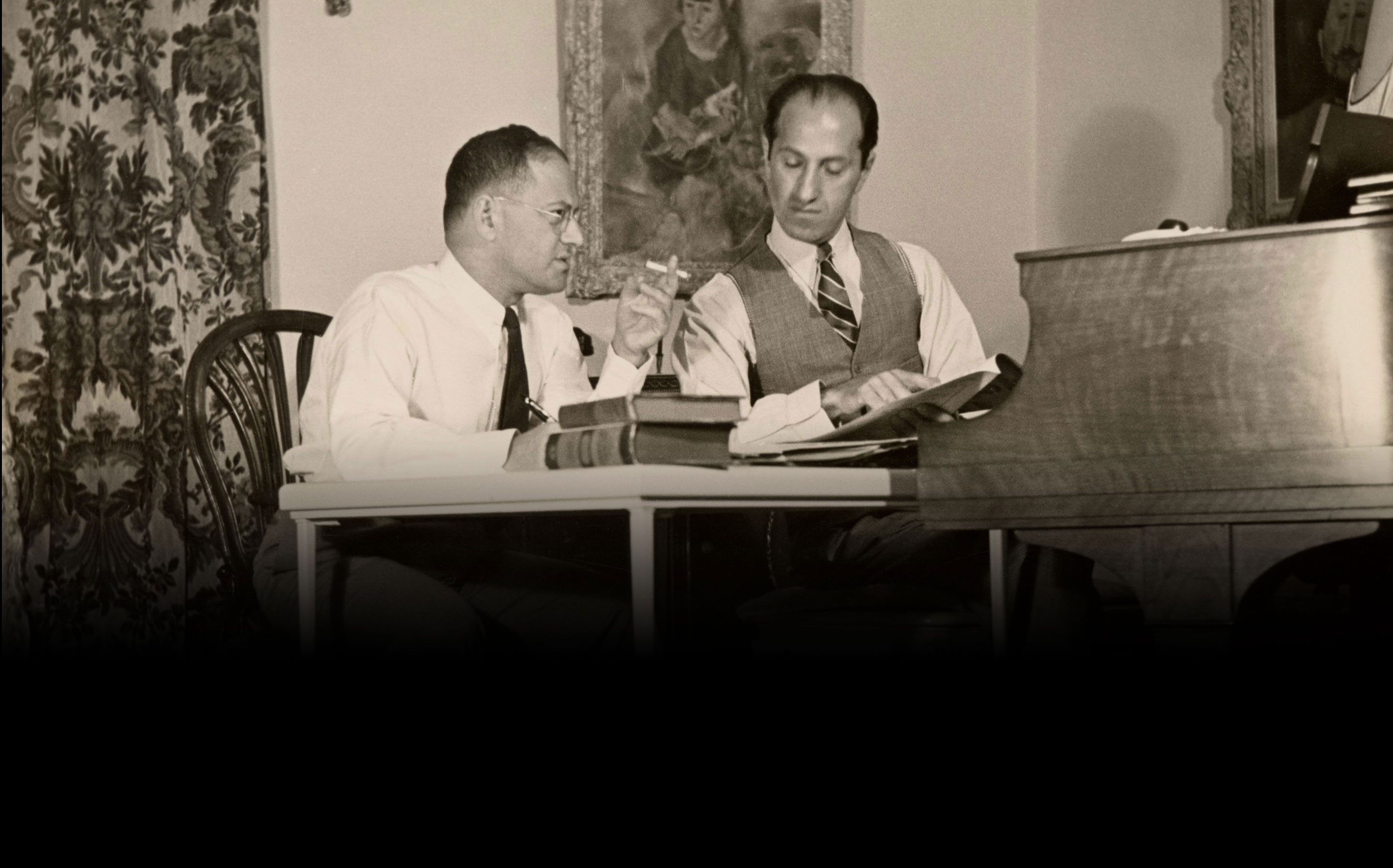Spotlight on the Conductor: Laura Jackson
This coming Sunday and Tuesday (Feb. 21 & 23), the Reno Philharmonic will be performing the Gershwin Initiative’s new, critically-edited versions of George Gershwin’s An American in Paris and Rhapsody in Blue. We sat down with Laura Jackson, music director and conductor of the Reno Phil, to talk about her experiences with Gershwin, our new editions, and her upcoming concerts.
Q: Hello, Laura, and thank you for spending a little time with us. To get right to it: What are some of the things that excite you the most about your upcoming performances of Rhapsody in Blue and An American in Paris with the Reno Philharmonic?
This project gives me an opportunity to bring something really special to my audiences. Whenever I have a chance to create something new and fresh out of something familiar and old, it’s quite a special experience. I am a big proponent of commissioning and doing new music, and I love to do that, because I feel like contemporary composers are taking the pulse of our world now, and our society now, and they are giving us a commentary on it. They’re giving us an avenue to reflect.
But the passion I have about this particular project is that it’s something familiar with a new twist. I’m getting back to Gershwin’s voice in his time, and that’s what this performance has in common with my passion for commissioning. Here, we have the opportunity to step back from the ways in which we are used to hearing these pieces and separate out what is Ferde Grofé [the arranger for Rhapsody in Blue], what is George [Gershwin], what is Frank Campbell-Watson [another popular arranger of George’s work], all these people who have come together to make a collective voice of what we think of as Gershwin, to step back and then say: what was Gershwin really getting at? This gives us a chance to make sure that we are taking care of and curating Gershwin’s voice and imagination, and his original creation.
Q: What was your first experience performing or hearing An American in Paris?
Actually, the first time I did both of these pieces was with the Atlanta Symphony, when I was their assistant conductor. It’s an amazing orchestra, and they knew both of these pieces very well. Andrew von Oeyen was my pianist—he’s world class, he’s great—so with all these very experienced performers, it was a bit intimidating to try and put my own stamp on either piece. Of course, we were doing the 1926 orchestral arrangement of Rhapsody in Blue and the Campbell-Watson version of An American in Paris, so they were the tried and true scores that we’re used to hearing.
I remember being so struck by An American in Paris as I was studying it for the first time and then performing it. You get through the first half of that piece and you feel like you’ve conducted an entire symphony—it’s really amazing. And from that I grew to respect him [Gershwin] so much as a composer, and as an architect of sound and imagination. There’s a way in which the score is episodic—it’s as though you’re walking the streets of Paris. But when I went to analyze it, to put it all together, and then to actually experience it, it’s such a wonderful rollercoaster ride. And what do I mean by that? It’s organic. It’s episodic, but it’s organic. And it is utterly thrilling to conduct and perform and be in the middle of. The sounds, the colors; the melodies are some of the most ingenious melodies ever written. It’s just really brilliant.
Q: And what about Rhapsody in Blue? What is your history with that piece?
My response to the Rhapsody in Blue score, the first time I studied it, was to notice how little orchestral writing there is around an extended piano work. It came across to me primarily as an improvised piano piece with a little bit of window dressing here and there for the orchestra. And when you hear the circumstances of its writing, you think, “Aha! this happened pretty quickly.” It was a spontaneous piece of great genius. There’s no question that the way it speaks to an audience, the immediacy—the way the melodies pour out is really tremendous. Everybody loves that piece. But I remember sensing the spontaneity of it, the lack of formal working out of thematic material, and also the brilliant vehicle it is for pianistic virtuosity. What a thrill it would have been to hear Gershwin himself play this piece! I find the approach Ryan Bañagale is taking for this critical edition particularly exciting because it brings us a lot closer to what that initial performance sounded like with Gershwin at the piano.
Q: What were the editions you were using before like? Did they pose any challenges?
I remember being really frustrated by a lot of the inconsistencies in the old edition in An American in Paris—articulations between winds and strings that don’t match up, for example. There’s this whole countermelody in the English horn [sings]: and you never hear it! There are dynamic markings in the French horns, for example, that never made sense to me—you don’t hear them on any recording, and it drives me crazy! So I remember these issues. It’s been fascinating to go back and pour over the original manuscript as well as these drafts of the new editions and see that some of those decisions were not Gershwin’s—some of them were an interpreter’s best guess at Gershwin’s intentions. These critical editions definitely solve some of the problems and inconsistencies in new ways, and provide, in some cases, a significantly different reading of Gershwin’s writing. There are other spots where Gershwin’s inconsistencies remain and the question of what to do—highlight the differences or minimize them—remains with conductors and performers. I like that actually.
I can also say that there were real questions for me at the end of Rhapsody in Blue, where in most of the performance traditions, they perform it almost in cut time. So you study the score, and then you hear what people do with it, and it does not match up. It’s totally different from the way it’s notated! And that caused real problems for me: I thought, what do we do here? So I’m really thrilled to have editors looking at these things and answering some of these questions.
Stay tuned for the second part of our interview in the weeks to come, where Laura Jackson talks about what the new critical scores from The George and Ira Gershwin Critical Edition have changed about how she approaches these works.
Good luck to Maestro Jackson and the Reno Phil this weekend!
 Anne Heminger, Ph.D. Candidate in Musicology at The University of Michigan.
Anne Heminger, Ph.D. Candidate in Musicology at The University of Michigan.


Can I found any other details about this subject in different languages?